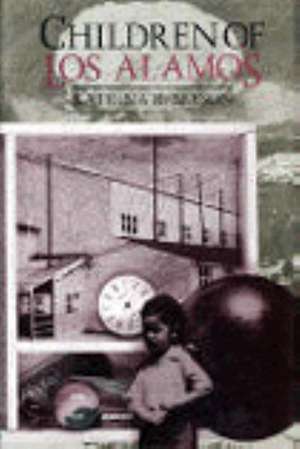Oral History Series: An Oral History of the Town Where the Atomic Bomb Began: Twayne's Oral History, cartea 19
Autor Katrina Masonen Limba Engleză Hardback – 30 sep 1995
Each volume includes:
-- A preface illuminating historical background and research details
-- A collection of oral testimonies selected from a range of rare and hard-to-find sources
-- A concluding analytical chapter
-- Notes, bibliography and an index
-- Illustrations
Preț: 497.69 lei
Nou
Puncte Express: 747
Preț estimativ în valută:
95.25€ • 99.07$ • 78.63£
95.25€ • 99.07$ • 78.63£
Carte indisponibilă temporar
Doresc să fiu notificat când acest titlu va fi disponibil:
Se trimite...
Preluare comenzi: 021 569.72.76
Specificații
ISBN-13: 9780805791389
ISBN-10: 0805791388
Pagini: 232
Dimensiuni: 164 x 243 x 25 mm
Greutate: 0.48 kg
Editura: Twayne Publishers
Seria Twayne's Oral History
ISBN-10: 0805791388
Pagini: 232
Dimensiuni: 164 x 243 x 25 mm
Greutate: 0.48 kg
Editura: Twayne Publishers
Seria Twayne's Oral History
Textul de pe ultima copertă
Katrina R. Mason has interviewed a wide range of people who spent all or parts of their childhoods in Los Alamos - from its muddy beginnings in 1943, when residents officially lived at P.O. Box 1663, to the late 1950s, after the laboratory had come under the auspices of the Atomic Energy Commission - to create this engaging and provocative portrait of a place that has come to epitomize both the scientific advances and the moral ambiguities of this century. Collectively the wartime children of Los Alamos - the children of scientists, of machinists and technicians from around the country, of construction workers from Texas and Oklahoma, and of Spanish Americans - constituted a microcosm of the United States. Mason identifies three elements common to their childhood recollections: a magnetic attraction to the land; a sense of security, that children always felt safe there; and multiculturalism. Almost all the children interviewed attribute their interest in other cultures and ability to get along with all kinds of people to their experience at Los Alamos. Some note that in important ways Los Alamos was an unusually stratified community, but most agree that scholastic achievement, not family background, determined one's place in the children's social strata. Mason gives readers a glimpse of what it was like to be the child of such luminous fathers as J. Robert Oppenheimer, Enrico Fermi, Edward Teller, Hans Bethe, and Kenneth Bainbridge at such an intense moment in American history. Her interviews also show what it was like to live in such a community when you were the child of a Spanish-American laborer or a machinist who'd brought his family over from a neighboring state. She explores howthe children have dealt with their often conflicting feelings about their parents' involvement in the creation of such a destructive weapon. Mason's volume illuminates these personal and often very emotional dimensions of a fascinating historical era, and as such should prove invaluable to students of modern American history.






